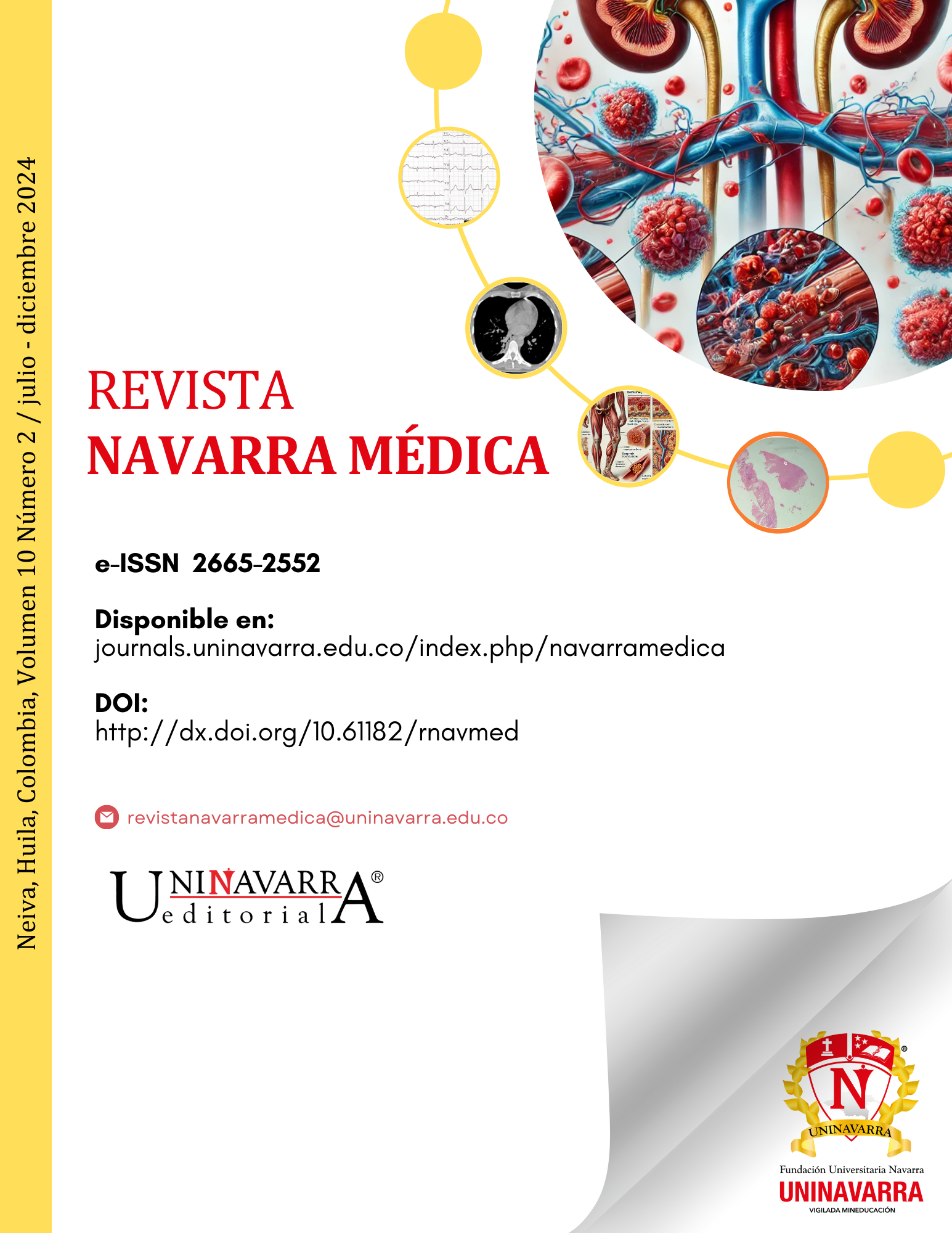III cranial nerve palsy associated with intracranial aneurysm: case report and management review
DOI:
https://doi.org/10.61182/rnavmed.v10n2a3Keywords:
Intracranial aneurysm, III cranial nerve palsy, Hypertension, Subarachnoid hemorrhageAbstract
Intracranial aneurysms, with a prevalence of 3.2%, are a significant cause of subarachnoid hemorrhage and severe neurological deficits. Saccular aneurysms account for approximately 90% of cases, with advanced age, female sex, hypertension and smoking being common risk factors. This case describes a 68-year-old female patient who presented with severe headache and palpebral ptosis. Diagnostic studies confirmed the presence of a saccular aneurysm in the left posterior communicating artery, which was successfully treated by endovascular embolization. Clinical, diagnostic and therapeutic aspects are discussed in the context of a multidisciplinary approach.
References
(1) Belavadi R, Gudigopuram SVR, Raguthu CC, Gajjela H, Kela I, Kakarala CL, et al. Surgical Clipping Versus Endovascular Coiling in the Management of Intracranial Aneurysms. Cureus [Internet]. 2021 Dec 17 [cited 2024 Jul 12];13(12). https://doi.org/10.7759/cureus.20478
(2) Rinkel GJE. Natural history, epidemiology and screening of unruptured intracranial aneurysms. Rev Neurol (Paris) [Internet]. 2008 Oct [cited 2024 Jul 12];164(10):781–6. https://doi.org/10.1016/j.neurol.2008.07.012
(3) Pierot L, Spelle L, Vitry F. Immediate clinical outcome of patients harboring unruptured intracranial aneurysms treated by endovascular approach: results of the ATENA study. Stroke. 2008 Sep 1;39(9):2497–504. https://doi.org/10.1161/strokeaha.107.512756
(4) Connolly ES, Rabinstein AA, Carhuapoma JR, Derdeyn CP, Dion J, Higashida RT, et al. Guidelines for the management of aneurysmal subarachnoid hemorrhage: a guideline for healthcare professionals from the American Heart Association/american Stroke Association. Stroke. 2012 Jun;43(6):1711–37. https://doi.org/10.1161/str.0b013e3182587839
(5) Yamaki VN, Brinjikji W, Murad MH, Lanzino G. Endovascular Treatment of Very Small Intracranial Aneurysms: Meta-Analysis. AJNR Am J Neuroradiol. 2016 May 1;37(5):862. https://doi.org/10.3174/ajnr.a4651
(6) Zhao J, Lin H, Summers R, Yang M, Cousins BG, Tsui J. Current Treatment Strategies for Intracranial Aneurysms: An Overview. Angiology. 2018 Jan 1;69(1):17-30. https://doi.org/10.1177/0003319717700503
(7) Molyneux AJ, Birks J, Clarke A, Sneade M, Kerr RSC. The durability of endovascular coiling versus neurosurgical clipping of ruptured cerebral aneurysms: 18 year follow-up of the UK cohort of the International Subarachnoid Aneurysm Trial (ISAT). Lancet. 2015 Feb 21;385(9969):691–7. https://doi.org/10.1016/s0140-6736(14)60975-2
(8) Nam KH, Choi CH, Lee J, Ko JG, Lee TH, Lee SW. Unruptured Intracranial Aneurysms with Oculomotor Nerve Palsy : Clinical Outcome between Surgical Clipping and Coil Embolization. J Korean Neurosurg Soc. 2010 Aug;48(2):109. https://pubmed.ncbi.nlm.nih.gov/20856657/
Downloads
Published
Versions
- 2025-04-24 (2)
- 2024-12-29 (1)
Issue
Section
License
Copyright (c) 2024 Beatriz Elena Suárez-Romero, Mario Enrique Montoya-Jaramillo , David Fernando Ortiz-Pérez, Elías José Zakzuk-Martínez , Valentina Coderque-Sepúlveda

This work is licensed under a Creative Commons Attribution-NonCommercial 4.0 International License.








